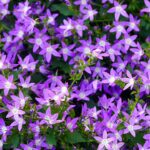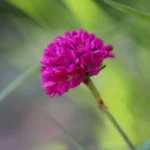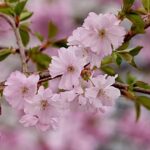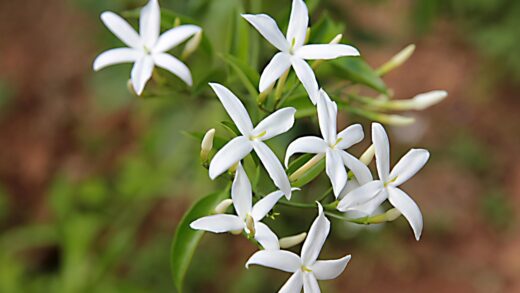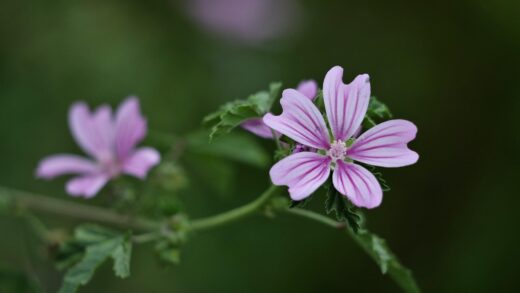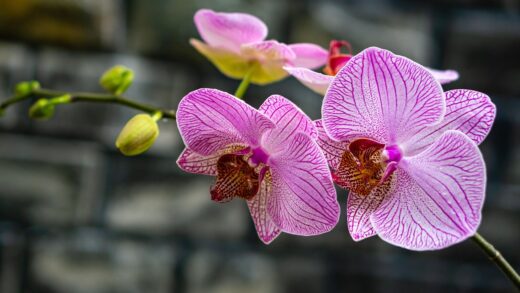Elecampane is a remarkably robust and vigorous perennial, generally untroubled by many of the common garden ailments that affect more delicate plants. Its hardy nature and slightly coarse, hairy leaves can deter many potential pests. However, no plant is entirely immune to problems, and under certain conditions, elecampane can fall prey to a number of diseases and pests. A vigilant gardener who understands the principles of proactive prevention and can identify early signs of trouble is best equipped to handle these issues effectively. The key to managing health problems in elecampane lies not in a reactive arsenal of chemical sprays, but in fostering a healthy growing environment that minimizes stress and bolsters the plant’s natural defenses.
The most successful strategy for dealing with diseases and pests is integrated pest management (IPM), an approach that prioritizes prevention and uses a range of tactics to keep problems in check. The foundation of IPM is a healthy, stress-free plant, as vigorous plants are far less susceptible to attack. This begins with selecting the right planting site with appropriate sun exposure and providing well-drained, fertile soil. Proper spacing to ensure good air circulation is perhaps the single most important preventative measure against fungal diseases, which are the most common issue for elecampane.
Good garden sanitation is another critical component of prevention. This involves promptly removing any dead or diseased leaves and stems from the plant and clearing away plant debris from the ground around its base, especially in the autumn. This material can harbor fungal spores and provide a hiding place for overwintering pests and their eggs. By maintaining a clean garden bed, you eliminate many potential sources of future infestations. Regular observation of your plants allows you to catch any problems at their earliest stages when they are much easier to control.
Encouraging biodiversity in your garden is a powerful, natural way to manage pests. By planting a variety of flowering plants, you can attract beneficial insects like ladybugs, lacewings, and hoverflies, which are voracious predators of common pests like aphids. Similarly, a healthy garden ecosystem will support birds, frogs, and other creatures that help to keep pest populations in balance. Avoiding the use of broad-spectrum chemical pesticides is crucial, as these products kill beneficial insects just as effectively as they kill pests, disrupting the natural balance and often leading to more severe pest outbreaks in the long run.
When intervention is necessary, the IPM approach advocates for using the least toxic methods first. This might mean physically removing pests by hand, using a strong jet of water to dislodge them, or applying horticultural soaps and oils. Chemical pesticides are considered a last resort, to be used only when a pest problem is severe and threatens the survival of the plant, and even then, a targeted, selective product is preferred over a broad-spectrum one. This thoughtful, multi-faceted approach ensures a healthier garden environment for plants, wildlife, and people.
More articles on this topic
Common fungal infections
By far the most common disease to affect elecampane is powdery mildew. This fungal disease is easily identified by the characteristic white, powdery patches that appear on the surfaces of the leaves, and sometimes on the stems and flowers. While it rarely kills the plant, a severe infection can reduce its vigor by interfering with photosynthesis, and it can be unsightly. Powdery mildew thrives in conditions of high humidity and poor air circulation, which is why proper plant spacing is so important. Warm days followed by cool, damp nights create the perfect environment for the spores to germinate and spread.
Preventing powdery mildew is more effective than trying to cure it. Ensure your elecampane has plenty of space around it for air to move freely. Watering at the base of the plant using a soaker hose or drip irrigation, rather than overhead sprinklers, helps to keep the foliage dry and less hospitable to fungal spores. If you notice the first signs of an infection, you can often slow its spread by removing and destroying the affected leaves. For more widespread issues, sprays of horticultural oil, neem oil, or a potassium bicarbonate solution can be effective controls.
Root rot is another potential fungal issue, though it is less common and is almost always a result of improper growing conditions. This disease is caused by various soil-borne fungi that attack the plant’s roots in overly wet, waterlogged, or poorly drained soil. The above-ground symptoms can be deceptive, often mimicking those of drought stress: the plant may wilt, and its leaves may turn yellow and drop. This is because the decaying roots are unable to absorb water and nutrients. If you suspect root rot, check the soil; if it is constantly soggy, that is likely the culprit.
The only real cure for root rot is prevention. Elecampane must be planted in soil that drains well. If you have heavy clay soil, amend it generously with compost and other organic matter to improve its structure and drainage before planting. Avoid planting in low-lying areas of the garden where water tends to collect after rain. If a plant is already affected, you may be able to save it by carefully digging it up, trimming away all the soft, brown, mushy parts of the root system with a sterile tool, and replanting it in a location with better drainage or in a raised bed.
More articles on this topic
Identifying and managing common pests
While its coarse, hairy leaves deter many chewing insects, elecampane is not entirely immune to pests. Aphids are one of the most common pests you might encounter. These small, pear-shaped, sap-sucking insects often congregate in clusters on the tender new growth at the tips of the stems or on the undersides of leaves. A small infestation is usually not a major concern, but a large population can weaken the plant, distort new growth, and produce a sticky substance called honeydew, which can lead to the growth of sooty mold.
Managing aphids is often straightforward. For a light infestation, a strong spray of water from a garden hose is often enough to knock them off the plant. You may need to repeat this every few days. Encouraging natural predators like ladybugs and lacewings is the best long-term control. If the problem persists, an application of insecticidal soap or neem oil spray is an effective and low-toxicity option. Be sure to spray the entire plant, paying special attention to the undersides of the leaves where the aphids hide.
Slugs and snails can be a significant problem, especially in the spring when the tender new shoots of elecampane are emerging. They are nocturnal feeders and can cause considerable damage overnight, chewing large, irregular holes in the leaves and sometimes devouring entire young seedlings. Their presence is often given away by the silvery slime trails they leave behind. They thrive in damp, shady conditions, so keeping the area around the plant clean and free of debris can reduce their hiding places.
There are numerous ways to control slugs and snails. Setting out shallow traps filled with beer will attract and drown them. Barriers of sharp materials like crushed eggshells, diatomaceous earth, or copper tape placed around the base of the plant can deter them. Iron phosphate-based slug baits are an effective and relatively safe option for use around pets and wildlife. For those with patience, heading out into the garden at night with a flashlight to hand-pick the pests is a highly effective, non-toxic method of control.
Bacterial and viral concerns
Bacterial and viral diseases are far less common in elecampane than fungal issues, but it is still wise to be aware of the possibility. Bacterial diseases, such as bacterial leaf spot, can cause water-soaked spots on the foliage that may enlarge and turn black or brown, often with a yellow halo. These diseases typically spread through water splashing from an infected plant to a healthy one, so again, watering at the soil level rather than overhead is a key preventative measure. There are few effective treatments for bacterial diseases in the home garden, so the best course of action is to remove and destroy infected plant material to prevent its spread.
Good sanitation practices are crucial for preventing bacterial infections. Always clean your pruning tools with rubbing alcohol or a bleach solution between cuts, especially if you have been working with a diseased plant. This prevents you from accidentally transmitting pathogens from one plant to another. If a plant is severely infected, it may be best to remove it from the garden entirely to protect its neighbors. Fortunately, these types of infections are rare in well-cared-for elecampane.
Viral diseases in plants are analogous to viruses in animals; they are systemic and generally cannot be cured. Symptoms can be varied and may include mosaic patterns of yellow and green on the leaves, stunted or distorted growth, and overall decline in vigor. Plant viruses are often spread by sap-sucking insects like aphids, which act as vectors, transmitting the virus from an infected plant to a healthy one as they feed. Therefore, controlling these insect pests is a primary method of preventing the spread of viral diseases.
If you suspect a plant is infected with a virus, the only responsible course of action is to remove and destroy it to prevent the disease from spreading to other susceptible plants in your garden. Do not add virally infected plants to your compost pile, as the virus may survive the composting process. While the prospect of a viral infection can be alarming, it is important to reiterate that they are not a common problem for elecampane. Healthy growing practices and pest management are the most effective safeguards against them.
Organic and chemical treatment options
When preventative measures are not enough and you need to intervene to control a pest or disease problem on your elecampane, there is a spectrum of treatment options available, ranging from simple organic solutions to more potent chemical controls. The IPM philosophy dictates starting with the least toxic and most environmentally friendly options first. For many common issues, these organic treatments are highly effective and all that is needed to bring the problem under control without harming the wider garden ecosystem.
For fungal diseases like powdery mildew, several organic sprays can be effective. Neem oil is a versatile product derived from the seeds of the neem tree; it acts as both a fungicide and an insecticide and is effective against mildew and pests like aphids. Horticultural oils and insecticidal soaps work by smothering the pests or fungal spores. Simple homemade remedies, such as a spray made from baking soda or milk mixed with water, can also work by changing the pH of the leaf surface, making it inhospitable to the fungus. These treatments often need to be reapplied, especially after rain.
For controlling insect pests organically, physical removal is the first line of defense. Hand-picking slugs or spraying aphids with water are good examples. If further action is needed, insecticidal soap is an excellent choice as it is effective against soft-bodied insects like aphids but has a low impact on hard-bodied beneficial insects like ladybugs. Bacillus thuringiensis (Bt), a naturally occurring soil bacterium, is a highly specific organic pesticide that is effective against certain caterpillar pests but is harmless to other insects, birds, and mammals.
Chemical pesticides and fungicides should always be a last resort. If you determine that a chemical treatment is necessary, it is crucial to choose the right product for the specific problem and to use it exactly according to the label instructions. Read the label carefully to understand the potential risks to pollinators, pets, and the environment. Apply the chemical in the evening when bees and other pollinators are not active. By reserving chemical treatments for severe infestations that do not respond to other methods, you can minimize their negative impact and maintain a healthier, more balanced garden.









